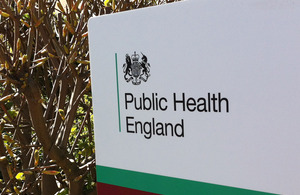Public health budget prioritisation in Durham
Local authority public health teams use the PHE prioritisation framework to help make recommendations on public health programme spends.

Summary
The County Durham public health team used the Public Health England (PHE) Prioritisation Framework (PF) to inform the controllable public health budget for 2019 to 2020. The framework allowed users to break down big decisions into smaller manageable pieces and think about how to get the best value for money.
Background
The overarching ambitions for public health in County Durham are to:
- increase life expectancy and healthy life expectancy
- reduce differences in life expectancy and healthy life expectancy between communities
The strategic plan has 16 priorities and the controllable budget must reflect these priorities. Many aspects to improve the public’s health are the whole council and wider partner’s responsibilities and therefore do not always have to rely on the public health budget. Influencing decisions to ensure health and wellbeing are considered in all policies, plans and commissions is an important part of the work of the role of public health in local authority.
At a time of uncertainty with regard to the public health budget and the future implications of possible fair funding and Advisory Committee on Resource Allocation (ACRA) proposals being implemented, the County Durham public health team has undertaken a budget prioritisation process to inform the 2019 to 2020 public health budget. This has been supported by the regional PHE team and has utilised the national PHE PF.
What was involved?
The framework doesn’t prescribe how budgets should be allocated between programmes. Instead, it allows users to break down big decisions into smaller manageable pieces.
It encourages public health teams to think about how to get the best value for money by considering:
- which programmes could offer the greatest value in the future
- the current state of programmes that are being delivered
- the budget currently divided across programmes
- how easy it is for programmes to change
By thinking in this structured way, users of the prioritisation process are able to make recommendations on whether to increase, decrease or maintain spend in each programme area.
Understanding future value and current state of public health programmes is done by groups of experts getting together to decide, through answering questionnaires in 2 or more rounds (Delphi process), what are the most important things to consider when deciding between options. These are called criteria.
The group then reviews collaboratively and discusses the evidence, before scoring each programme for each criterion, based on the programme’s characteristics. Adding together these scores for a programme can indicate which option will produce the greatest value.
Using the prioritisation process, the team are then able to produce a set of recommendations to increase, decrease or maintain spend in each programme covered by the public health budget. It is important to remember that the framework doesn’t say how to spend the public health grant. It will help decisions be generated collaboratively using an informed and auditable process.
In County Durham, the process has included Durham County Council commissioning, finance and corporate colleagues as well as all members of the public health team. County Durham is part of a national evaluation to determine if the PHE Prioritisation Framework impacts upon budgetary decisions.
The outcome of the above described Delphi process has resulted in rich discussion and has led to some clear decisions with regard to proposed future allocation of programme budgets for 2019 to 2020.
What worked well?
The process has enabled a mixture of technical detail to be considered as well as professional expertise and judgement applied. Being able to follow an auditable process to decide how a programme budget should be spent provides a transparent rationale.
Benefits:
- an auditable process with clear steps to follow
- working with the regional PHE team
- an engaging framework which stimulated debate in the team and gave a sense of ownership
- team building and protected time to think
- an opportunity to share with the rest of the council a sound methodology to consider prioritisation of budgets
The process could be applicable to other areas of local authority programme spend should there be a desire to replicate. It is important to note the time commitment to complete this process properly.
What could be improved?
Having a pre-populated evidence base would be timesaving - the evidence is the evidence.
The tool was at times slow and snagged.
Next steps
The detail with regard to how much the programme budgets would reduce and increase is to be worked through as the next stage. This will be considered within the technical efficiency stage and varying scenarios would be considered such as 2, 5, 10, 15, 20% reductions or increases.
The national PHE prioritisation framework can support this work alongside NICE and PHE return on investment tools. The usual review process of evidence base and consultation will be applied. This all has to be in the context of the wider national agenda of business rates and fair funding.
Further information
Gill O’Neill, Deputy Director of Public Health, Durham County Council.